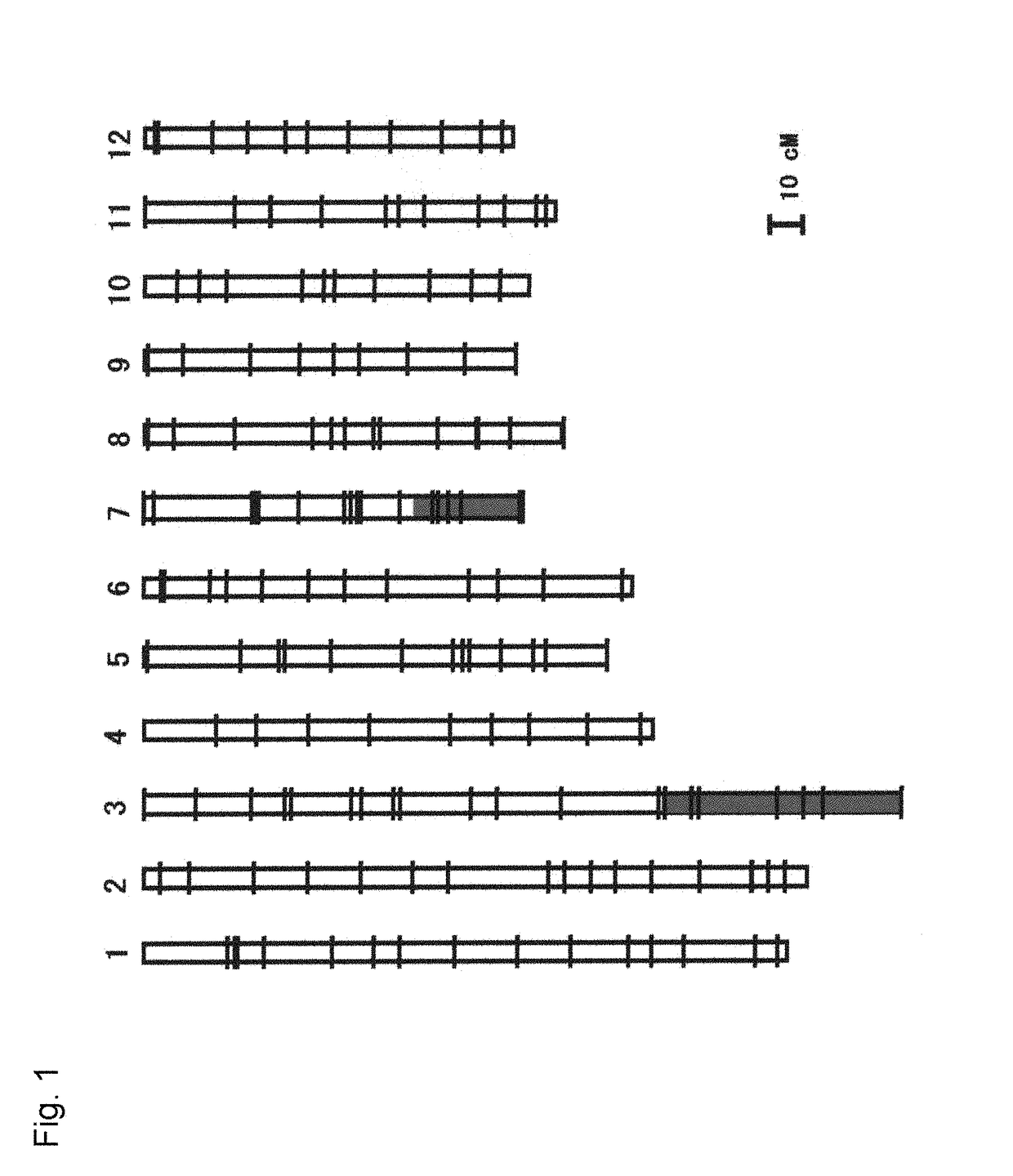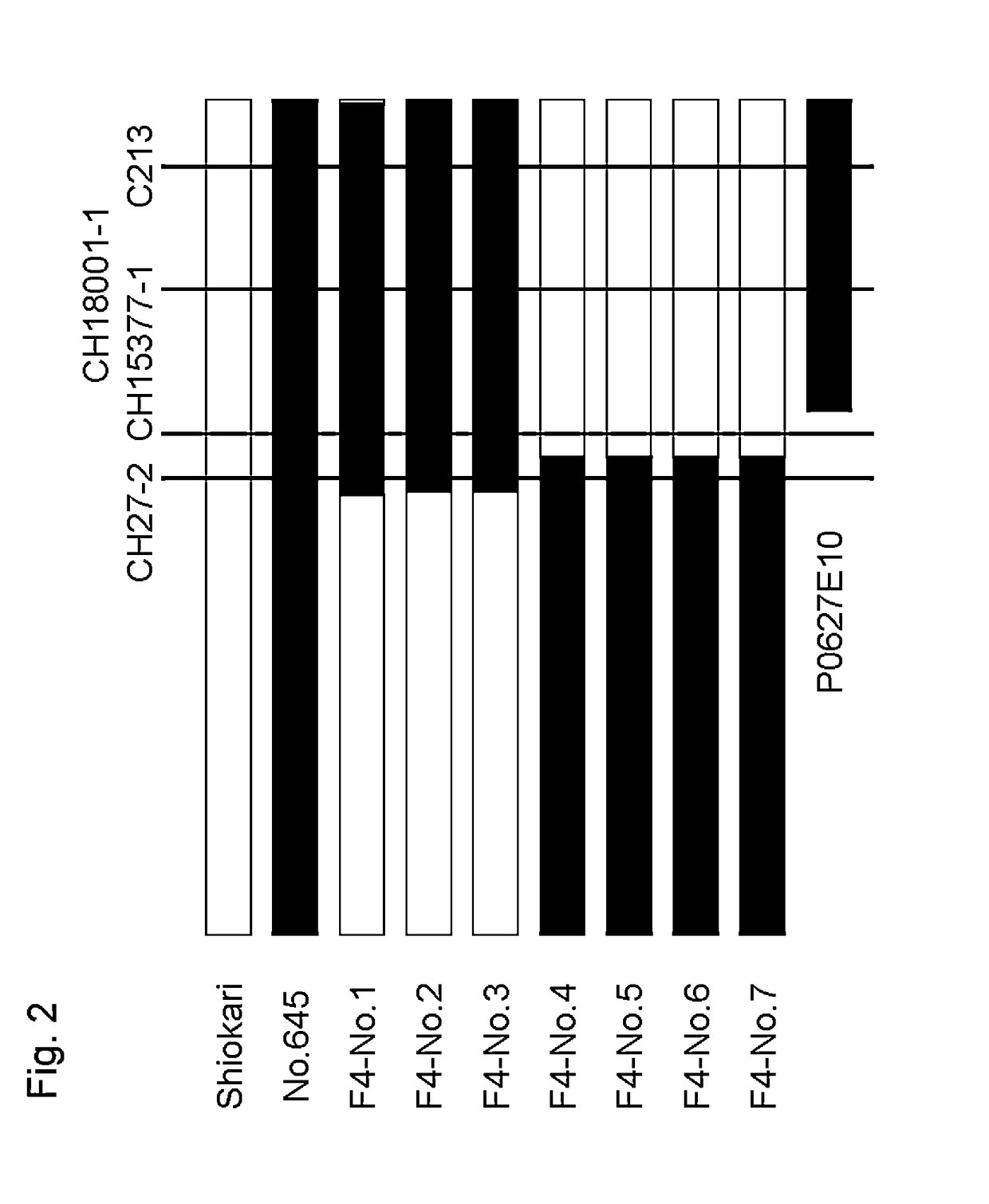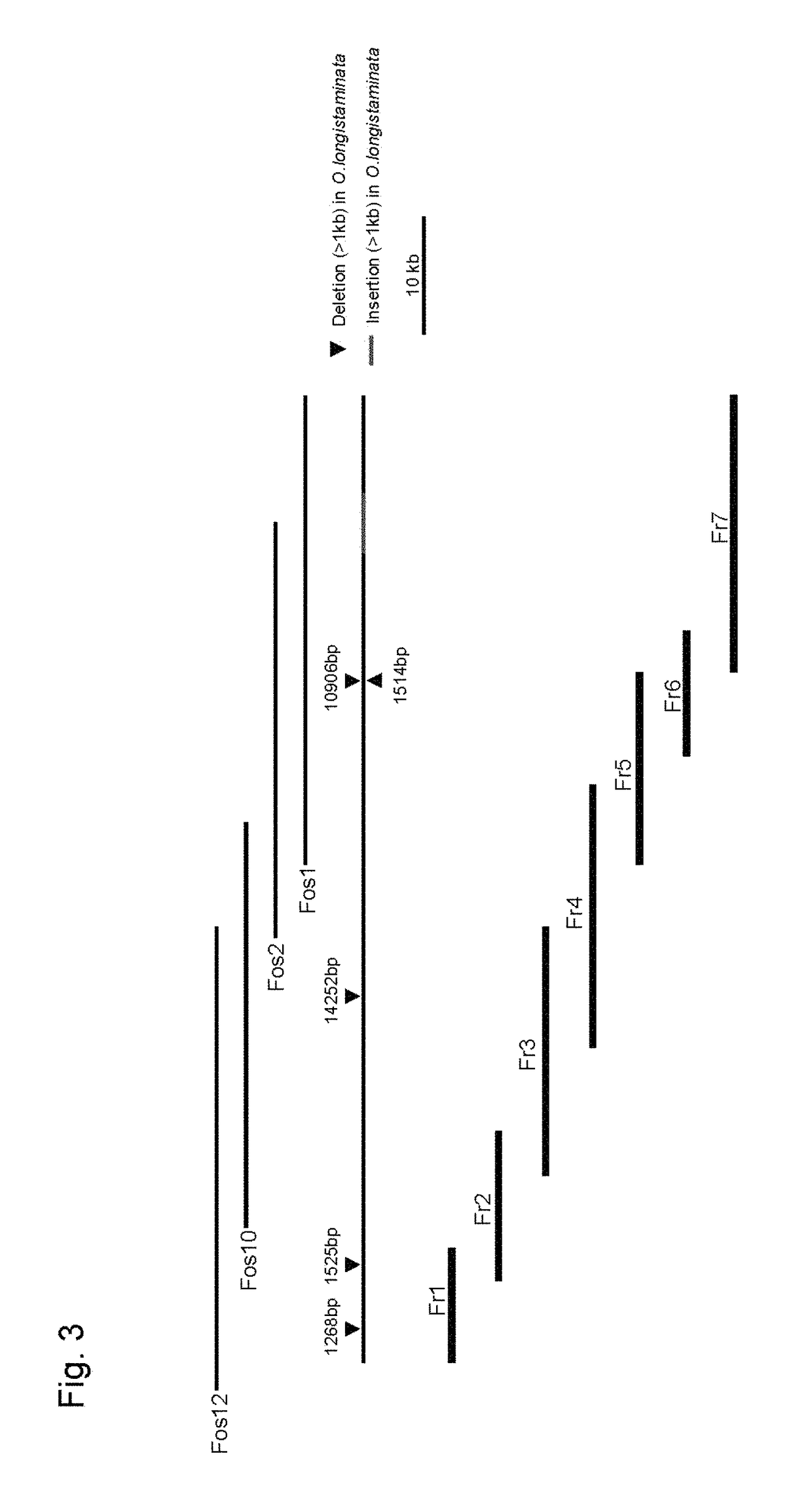Nucleic acid imparting high-yielding property to plant, method for producing transgenic plant with increased yield, and method for increasing plant yield
a technology of nucleic acid and plant, applied in the field of nucleic acids, can solve the problems of difficult identification, limited number of desired genes, and long time and labor for cloning the desired gene, and achieve the effect of high yield
- Summary
- Abstract
- Description
- Claims
- Application Information
AI Technical Summary
Benefits of technology
Problems solved by technology
Method used
Image
Examples
example 1
of Cultivated Rice Line Having the High-Yielding Ability of Wild Rice Species O. longistaminata and Identification of High-Yielding Ability Gene Region
[0167]Oryza longistaminata (O. longistaminata), a wild rice species native of Africa, is known to have the same A genome as the cultivated species Oryza sativa (O. sativa L) but show a larger biomass than the latter. With a view to introducing this superior trait of O. longistaminata into a cultivated species, the present inventors continued the cross and selection efforts on the rice cultivar Shiokari and O. longistaminata to eventually obtain BC7F6 line No. 645 which showed higher yield than Shiokari; No. 645 surpassed Shiokari in most agricultural traits, among which “increased culm base diameter” was prominent (Table 1). This high-yielding line was investigated for its genotype using 80 DNA markers covering a total of 12 chromosomes and it was found to have only the terminal portions of chromosomes 3 and 7 in O. longistaminata (FI...
example 2
tation Test (1) by Transformation Test for the Terminal Region of Chromosome 7 in O. longistaminata
[0172]By the genetic analysis conducted in Example 1, the high-yielding ability gene region of O. longistaminata could be narrowed down to within ca. 180 kb of the terminal portion of chromosome 7. Seven constructs were created that covered a ca. 82-kb region of that area and they were each introduced into Shiokari; the resulting transgenic plants were evaluated for their traits.
[0173]A genomic library of No. 645 was prepared using the fosmid vector pCC1FOS (EPICENTRE). Since it was shown by genetic analysis in Example 1 that the gene involved in high-yielding ability resided in the terminal portion of the longer arm of chromosome 7, the library was screened using C213 and C728, two DNA markers for that region (Harushima et al, 1998), to select four clones (Fos1, 2, 10, and 12). The terminal nucleotide sequences of each clone were decoded and compared with the genomic sequence of Nipp...
example 3
tation Test (2) by Transformation Test for the Terminal Region of Chromosome 7 in O. longistaminata
[0203]The seven constructs that did not show increased growth in the 2007 test were tested again, with the number of lines per construct (each line derived from independent T0 individuals) being increased to five (12 individuals per line, different from the lines tested in 2007). Seeding was performed on May 30, 2008; transplanting was conducted in 3.5-L buckets containing paddy field soil with 4 individuals (3 buckets per line to make a total of 12 individuals.) on June 16. Cultivation was performed in the greenhouse of closed system for dedicated use in recombination experiment (under long-day condition with a day length of 14 hours and a half) at the Plant Innovation Center of Japan Tobacco Inc. with no fertilizer applied. Harvesting was conducted on September 8. Agronomic traits including days to heading, culm length, the number of panicles, culm base diameter, panicle length, the...
PUM
| Property | Measurement | Unit |
|---|---|---|
| pH | aaaaa | aaaaa |
| pH | aaaaa | aaaaa |
| temperature | aaaaa | aaaaa |
Abstract
Description
Claims
Application Information
 Login to View More
Login to View More - R&D
- Intellectual Property
- Life Sciences
- Materials
- Tech Scout
- Unparalleled Data Quality
- Higher Quality Content
- 60% Fewer Hallucinations
Browse by: Latest US Patents, China's latest patents, Technical Efficacy Thesaurus, Application Domain, Technology Topic, Popular Technical Reports.
© 2025 PatSnap. All rights reserved.Legal|Privacy policy|Modern Slavery Act Transparency Statement|Sitemap|About US| Contact US: help@patsnap.com



